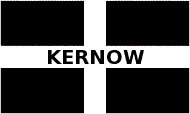St. Michael's Mount Series - Photo 9a & 9b
We've come now, to the end of our island tour, I hope you've enjoyed St. Michael's Mount!
St. Michael's Mount (Cornish: Karrek Loes yn Koes), rises majestically almost 230 feet from sea level to the tower, chapel and battlement of the castle. Approximately 500 yards offshore the Mount is reached by small ferry boats which ply between Marazion and the Mount's harbour at high tide, or a granite causeway which enables pedestrian and service traffic at low water. Fairytale, Magik and Legends, this historic island has it all! Before we leave this series, I'd like to share a story or two...
St. Michael's Mount (Cornish: Karrek Loes yn Koes), rises majestically almost 230 feet from sea level to the tower, chapel and battlement of the castle. Approximately 500 yards offshore the Mount is reached by small ferry boats which ply between Marazion and the Mount's harbour at high tide, or a granite causeway which enables pedestrian and service traffic at low water. Fairytale, Magik and Legends, this historic island has it all! Before we leave this series, I'd like to share a story or two...
Once, it had been thought to have been the site of the ancient island of 'Ictis'. This being the major tin exporting port of the 'Cassiterides' - the tin islands trading with the Phoenicians or Greeks of the eastern Mediterranean from about the 4th Century BC. Dedicated to the Archangel St. Michael, the Mount is approximately 400 metres offshore, and can be reached at low tide by a stone causeway. Local legend has a more colourful explanation: the Mount was built by, and home to, the giant 'Comoran'. He would come ashore and steal sheep and cows from the mainland and return to the Mount to eat his meal. He was supposedly killed by a local boy, later called Jack - the Giant Killer. In another legend, St. Michael the Archangel,
is believed to have appeared here in AD 710.
In the 11th century it was given to the monks of Mont St Michel in France who founded a priory here. At the dissolution in 1539, the revenues were given to Henry Arundell who was appointed Governor. The Mount, on the orders of Sir Francis Basset, then Sheriff of Cornwall, remained loyal to the King during the English Civil War but it was attacked and taken by Parliamentary forces, under the command of Colonel Hammond, in April 1646. Major Ceeley was appointed Governor in 1659, by Richard Cromwell who had briefly succeeded his father as Lord Protector. At the Restoration in 1660, John St Aubyn became the proprietor, and the Mount has continued in that family ever since. The nunnery and house for the monks were placed below the church to the east, south and west; they were much altered during work in 1720 to convert the buildings into a family residence for the St Aubyn family. Further alterations were made in 1826. Since 1660 it has been in the possession of the St Aubyn family and a small village has grown up near the harbour. In 1811, there were fifty houses, eight of which were uninhabited. By 1820 the little town of St Michael had two or three small Inns, and about seventy dwellings.







1 comment:
So wow, I really enjoyed your series on this Mount. The pictures were great and easy to imagine what it must have been like thousands of years ago... or is it hundreds?
Post a Comment